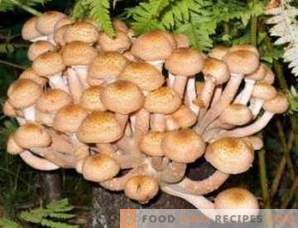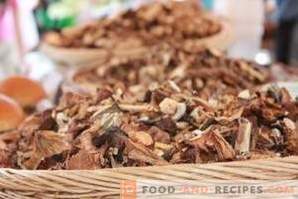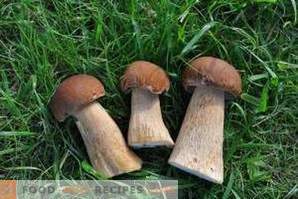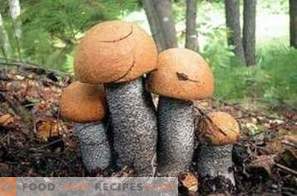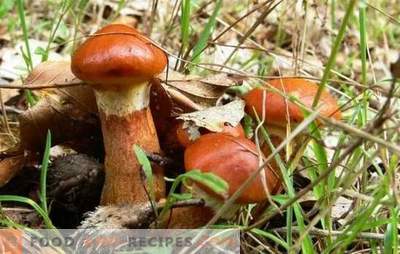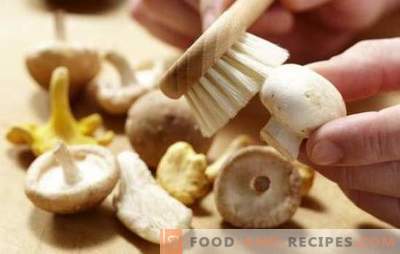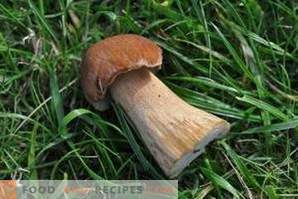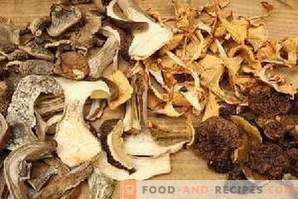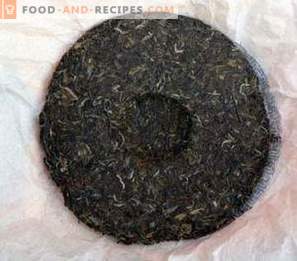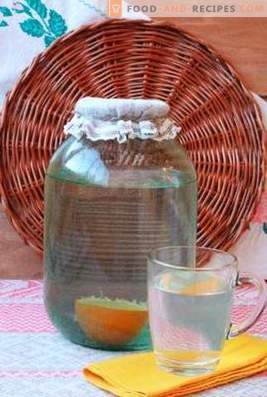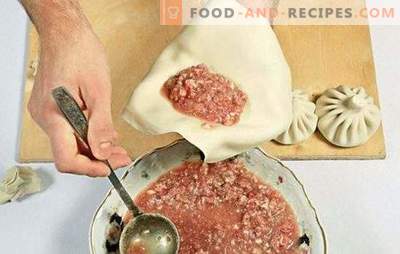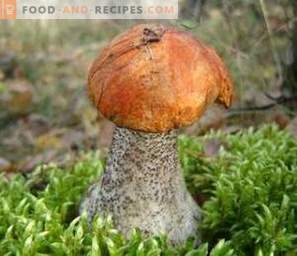
With the onset of autumn, the season of “quiet” hunting begins - whole people travel to the forest to pick up mushrooms. This tradition has been preserved for many decades, mushroom pickers are happy to gather, process, preserve and dry these amazing gifts of nature.
Find a boletus for any mushroom picker is considered a great success. Of course, an experienced mushroom picker knows perfectly how to properly clean a mushroom so as to preserve its taste as much as possible. But with the novice “silent hunters” we will share some secrets of cleaning aspen mushrooms.
General rules for cleaning mushrooms
Mushroom cleaning begins in the forest, during the mushrooming process. Cut mushroom must be thoroughly cleaned from sticking to it leaves, needles and other forest debris. Also, a sharp knife removes the corroded insects and worms of the fungus.
Particularly hardworking mushroom pickers can even peel the mucous peel off the cap. Such a thorough cleaning will certainly increase the time of mushroom assembly, but it will allow you not to do this dirty work at home.
If you thoroughly clean the mushrooms right in the forest, you can immediately start cooking at home. Fresh mushrooms spoil very quickly, and for processing and cooking you have no more than five hours. In order for the collected mushrooms not to darken too quickly, they can be dipped in cold, slightly salted water. But this can be done only if the mushrooms are not planned to be dried. If you plan to dry the mushrooms, then they are better not to rinse or wet. If the mushrooms are still dark and spoiled, you should not risk the health of your loved ones - these mushrooms should be thrown out with an unwavering hand. Mushroom poisoning is considered one of the most severe types of intoxication.
It is not recommended to cook and process mushrooms of different types together, therefore it is recommended to disassemble them by species before cleaning. Methods of storage, cleaning and cooking of various mushrooms have significant differences. Those mushrooms that in the future will not be subjected to heat treatment, should be cleaned with special care.
Rules for cleaning aspen mushrooms
Aspen is considered an elite mushroom, so many people doubt whether it is necessary to clean it. Boletus, like all mushrooms, in the process of growth actively absorbs all types of pollution that are in the environment. So it is not only possible, but necessary to clean the aspen mushrooms.
If it is planned to dry the boletus, it cannot be washed. Wetted mushrooms will dry for a very long time and most likely will rot. Therefore, for the mushrooms that will be dried, you need to use dry cleaning. Dry cleaning is to remove with a knife or a toothbrush all dirt and adhered debris.
If drying is not planned, then the aspen mushrooms can be pre-placed in a container with salted water and kept for about an hour - after that the mushrooms can be easily cleaned. Cleaning aspen mushrooms always starts with a leg. The unnecessary and ugly base of the fungus is cut off, all heavily soiled and damaged parts are cut off. The top layer of the legs can be scraped off with a knife (like a carrot) or thoroughly cleaned with a brush.
However, many mushroom pickers neglect cleaning the legs of the orange-cap boletus, especially when a lot of mushrooms have been collected and there is simply no time to thoroughly clean. In this case, simply flush the mushrooms thoroughly and remove all damaged parts. The presence on the leg of untreated black stripes does not affect its quality and taste.
Removing the film from the cap or not - is also a matter of taste. The cap of an aspen is usually not cleaned with a knife, so a dry, lint-free rag can be used.
After brushing, rinse the mushrooms several times under running water and immediately start canning.
